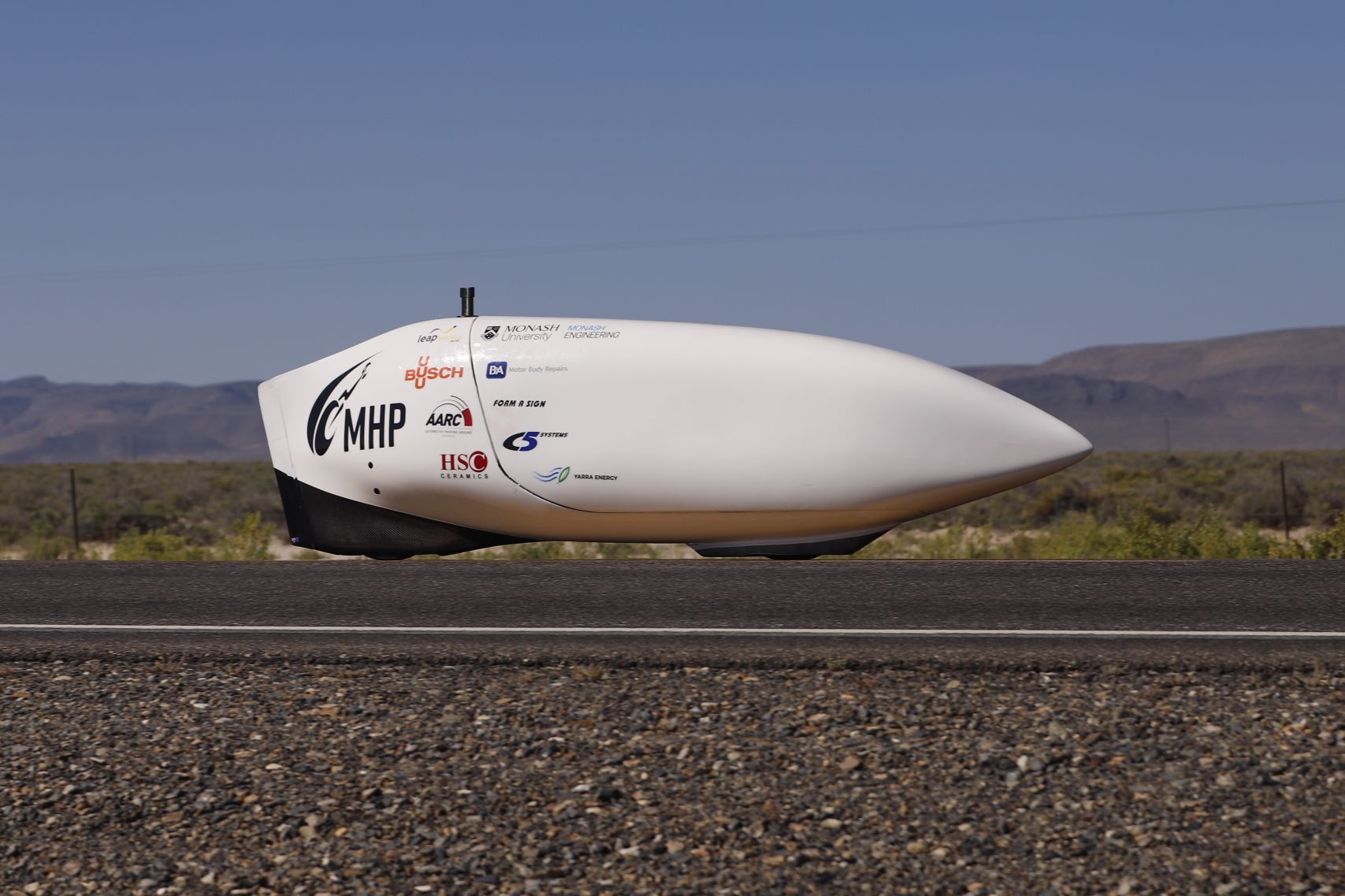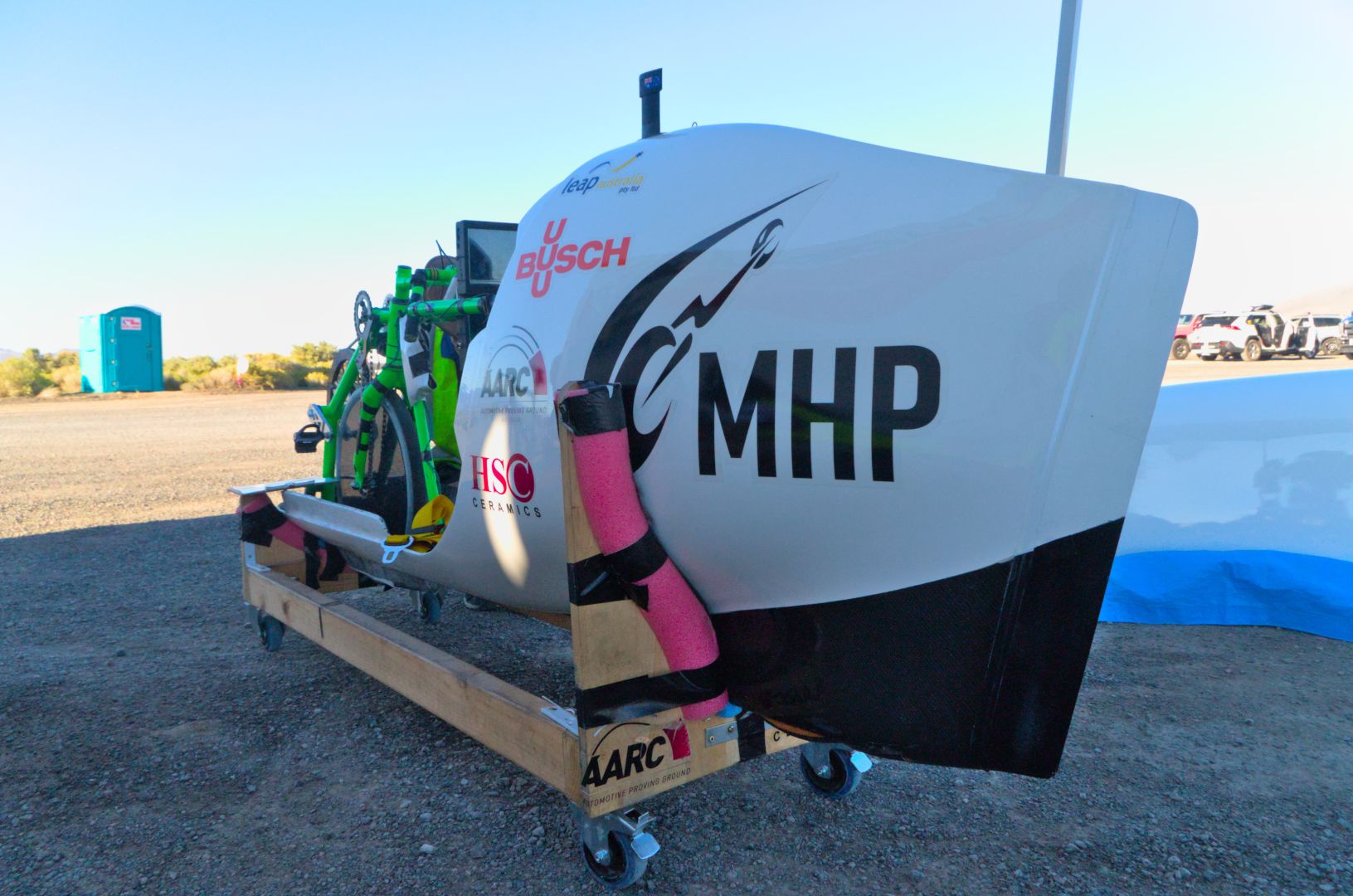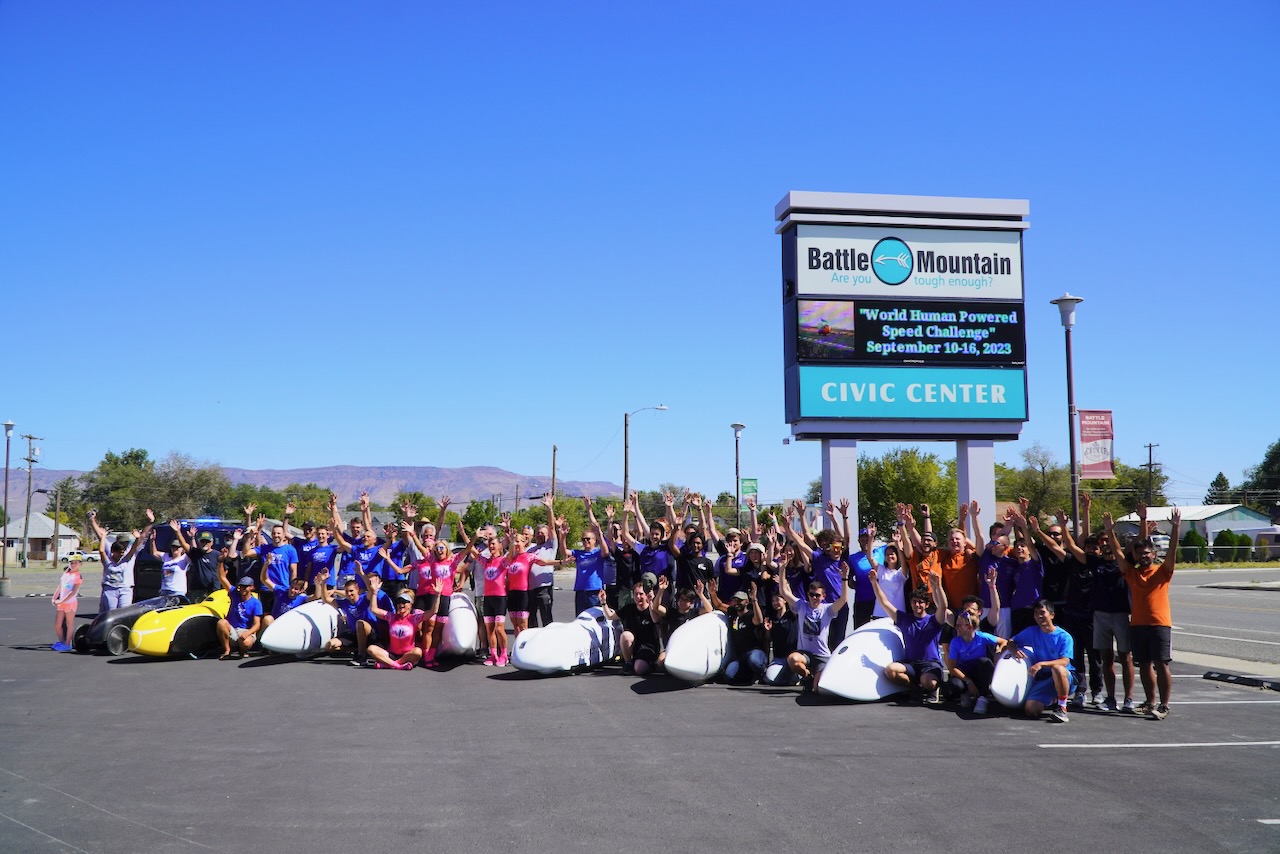World Human Powered Speed Challenge
In September 2023, Monash Human Power (MHP) competed for the first time in the World Human Powered Speed Challenge (WHPSC). I was fortunate to be among the 16 team members who travelled to Battle Mountain in Nevada, USA to compete with our bike Bilby, alse known as V3. We had a fanstastic time, did a lot of talking to people from across the world also involved with weird bicycles and broke a record in the process.

Bilby flying through the speed traps. Photo credit: MHP
Event format
The WHPSC is an event where teams compete for flying 200m speed records. Each attempt takes place along state route 305, a relatively flat section of road that is periodically shut to allow the Human Powered Vehicles (HPVs) to run down it. Each vehicle and rider are launched with up to 15m of external assistance allowed to help them stay upright at low speeds if required. Once launched, they have an 8km run up to get up to speed. The vehicle is timed over the final 200m of this 8km to calculate their top speed. The vehicle and rider then have approximately 1km to slow down before being caught by a team of catchers.
The WHPSC run over the course of a week and has sessions of running in the morning and evening when the winds are lowest. This gives vehicles many attempts at doing their best (wind legal) runs.
For more information, see this data visualisation I made.
Design and construction of Bilby

Preparing Bilby for a run.
MHP largely designed and constructed Bilby from 2019-2022 and has been improving it ever since. Bilby’s first major outing was to the Australian Ford Speed Trials over Easter 2022, run by OzHPV.
Bilby uses a chromoly steel chassis and a composite fairing. Like many high speed HPVs, Bilby does not have any windows and instead relies on cameras and displays to show the rider where they are going. There are two physically separate camera systems for redundancy in the event that one fails. Each camera systems usees a raspberry pi single board computer for its processing needs. One of my early projects with MHP was to design the Printed Circuit Boards (PCBs) that power each camera system. The bike also has several sensors and telemetry streams that are processed, stored and shown to the rider and chase car behind the bike as required.
Other teams at the WHPSC

All teams at the 2023 WHPSC. Photo credit: Jun (https://jnyyz.wordpress.com/2023/09/16/whpsc-2023-team-photos/)
There were several other teams at the event, including university teams Policumbent and IUT Annecy’s Altair 7. It was very inspiring to talk to all the teams and event organisers and hear how they were approaching and overcoming similar problems to those MHP’s vehicles face.
MHP’s records and performance
MHP had four riders at the WHPSC, all of whom achieved speeds of over 110km/h during the competition. Chris and Oscar unfortunately never had a wind legal run. Kit and Al both broke the previous men’s singletrack Australian record with 116.39km/h and 116.05km/h runs respectively.
Some of the electronics and software were playing up a little over the event, however the team worked hard to resolve the issues and keep Bilby running at the best it has ever been.
We had a couple of front tyre punctures during the WHPSC, which tested the vehicle’s structural integrity. Bilbly performed as designed and kept the riders safe during these events.
Overall, this was an extremely successful trip for MHP and I was glad to be a part of it.